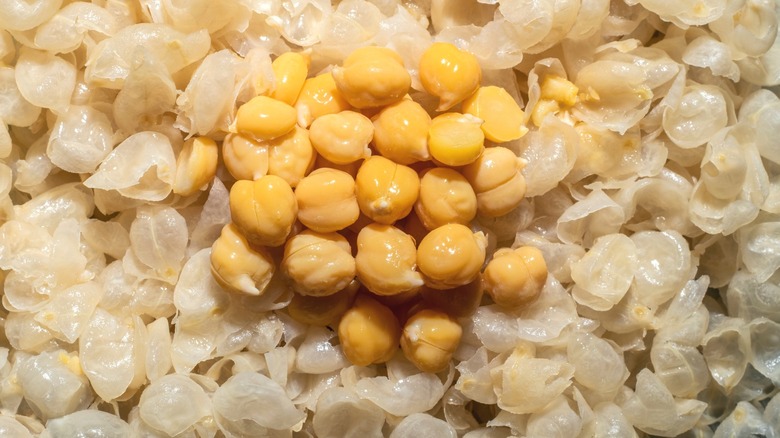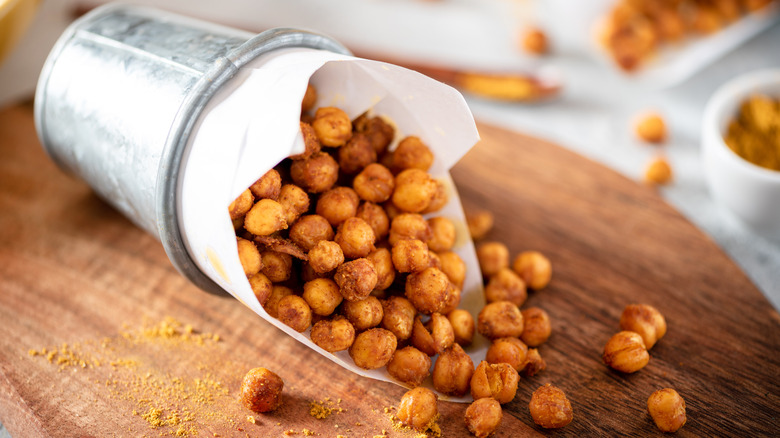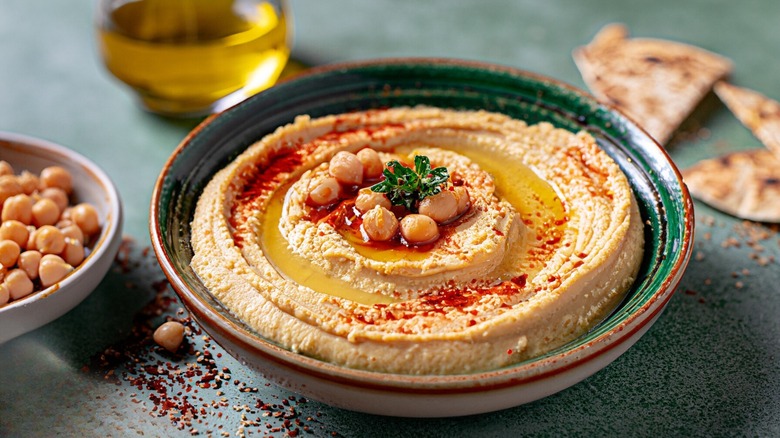Do You Ever Need To Skin Chickpeas?
Delicious chickpeas are loved worldwide and used in a wide variety of cuisines. From Indian chana masala curry to Middle Eastern hummus, these beans add their mildly nutty and earthy taste to many comforting dishes. Along with their versatile flavor, chickpeas are also consumed for their nutritional benefits, which include being high in protein and having a substantial amount of fiber. They are easy to prepare, and can be eaten straight from the can or purchased dried and cooked from scratch. However, one common confusion about chickpeas that many people have is whether you ever need to skin them.
The outer peels on cooked chickpeas are a papery thin membrane that comes off easily with only a bit of pressure. However, you don't actually have to remove them, and they're usually just left on. The skins are edible, and mostly melt away when eaten, without much of a discernible flavor. They are so thin as to be nearly transparent and mostly unnoticeable. These peels are not entirely worthless either, as they also contain some of the bean's nutrients, especially in the form of dietary fiber. Still, some people choose to discard them, and certain dishes can benefit texturally from their removal — such as a basic homemade hummus — but it's entirely a matter of preference.
Removing a chickpea's skin changes its texture
It's time-consuming to skin chickpeas before using them, but there are reasons to do it anyway. For some people, it's a textural thing; they might find them slimy, or take issue with loose skins floating around in their food. One popular way to prepare chickpeas is to season and roast them until crunchy, then enjoy them on their own as a snack or as a topping. The peels can present a couple of problems with this method. Some people claim that they burn too quickly, although others think it just adds another layer of tasty crunch. The roasted skins can also become a nuisance by getting stuck in your teeth, similar to popcorn (but that doesn't stop most people from eating popcorn either).
The one recipe where most people agree that skinning chickpeas does make a significant difference is when making hummus. The ancient dish has as many different origin stories as it does ways of preparing it. As many chefs will tell you, to get perfectly creamy restaurant-quality hummus, you should indeed remove the skins. It makes sense if you think about it — removing the fibrous covering and just using the soft inner bean can only help when aiming to achieve that delectably smooth consistency.
Here's the skinny on how to peel garbanzos
There are a few ways to skin garbanzo beans if desired. That's not a typo, there's actually no difference between chickpeas and garbanzo beans — they're different names for the same thing. Regardless of what you call them, you might opt to peel them to get the creamiest hummus possible. Surprisingly, baking soda is key for getting them quickly peeled.
If starting with dried chickpeas, soak them overnight to soften. Drain and rinse the soaked beans and mix them with baking soda. This acts as an alkali that will dissolve the delicate skins — 1½ teaspoons per every 2 cups of beans will do. Briefly heat for a few minutes in a pot, then proceed with adding water and boiling the beans until cooked. By the time they're done, the skins will have mostly broken down and released.
This works with canned chickpeas too. Mix them with baking soda then heat in a pan or microwave. After that, rub the beans with your hands under a few rinses of water — the skins should come right off.
Is this trick possible without the baking soda? The loose skins can be removed by hand, but it will take a little more effort. They'll detach by agitating and rubbing the beans in a bowl of water. For small amounts such as a can's worth, you can also just pinch the peels off of each bean, which all in all takes only a few minutes to complete.



